Abstract
The nuclei of epididymal sperm, isolated from C57BL/6J and CBA/J inbred mice by their resistance to trypsin digestion, retain the shape differences of the intact sperm head. Various physical characteristics of these nuclei were measured and compared. The measurement of the projected dimensions of nuclei showed that the CBA nuclei are 13.5% longer than C57BL/6 nuclei (8.64 +/- 0.02 mum compared with 7.61 +/- 0.02 mum), 0.8% narrower (3.51 +/- 0.01 vs. 3.54 +/-0.01 mum) with 6.8% more area (22.34 +/- 0.10 vs. 20.91 +/- 0.09 mum2). However, the volumes of the nuclei as based on reconstructing calibrated electronmicrographs of serial sections of the nuclei indicated that CBA are about 7% smaller than C57BL/6 nuclei (3.72 +/- 0.08 vs. 4.01 +/- 0.03 mum3). The buoyant density of the CBA nuclei is 1.435 +/- 0.002 g/cm3 compared with 1.433 +/- 0.002 g/cm3 for the C57BL/6 nuclei as determined on linear CsCl and Renografin-76 density gradients and confirmed by a technique utilizing physiological tonicities. Therefore, the average mass of the CBA nuclei is less than that of the C57BL/6 nuclei (5.34 +/- 0.12 vs. 5.75 +/- 0.05 pg). The sedimentation velocities at unit gravity of nuclei from 11 inbred strains differ over a range of more than 6% with CBA nuclei sedimenting about 2.0% more slowly than C57BL/6 nuclei. We show that for these nuclei the sedimentation velocity can be related to their buoyant density, volume and a sedimentation shape factor. Within the errors of our measurements of these various characteristics, it was found that C57BL/6 and CBA nuclei have similar sedimentation shape factors. Therefore, the difference in sedimentation velocity between these nuclei appears to be primarily a result of differences in volume. The possible applications of these techniques to the physical separation of sperm are evaluated in the discussion.
Full text
PDF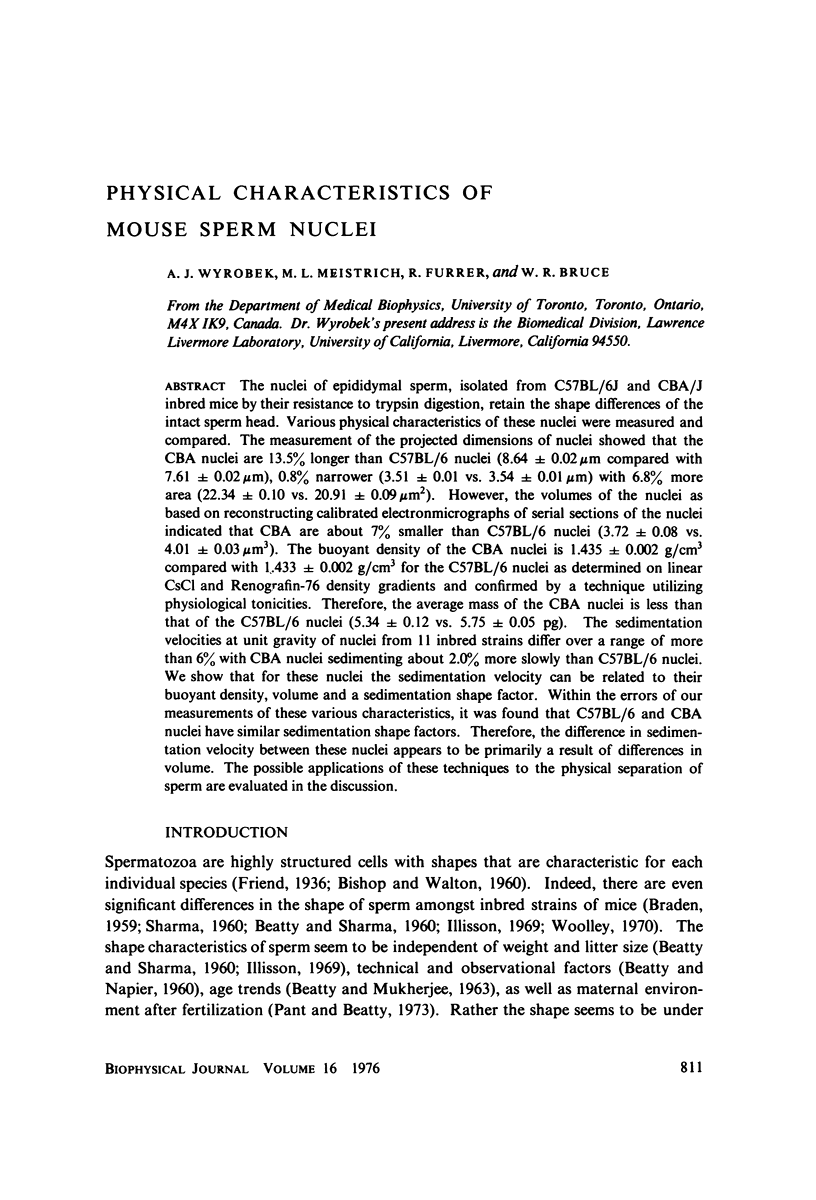
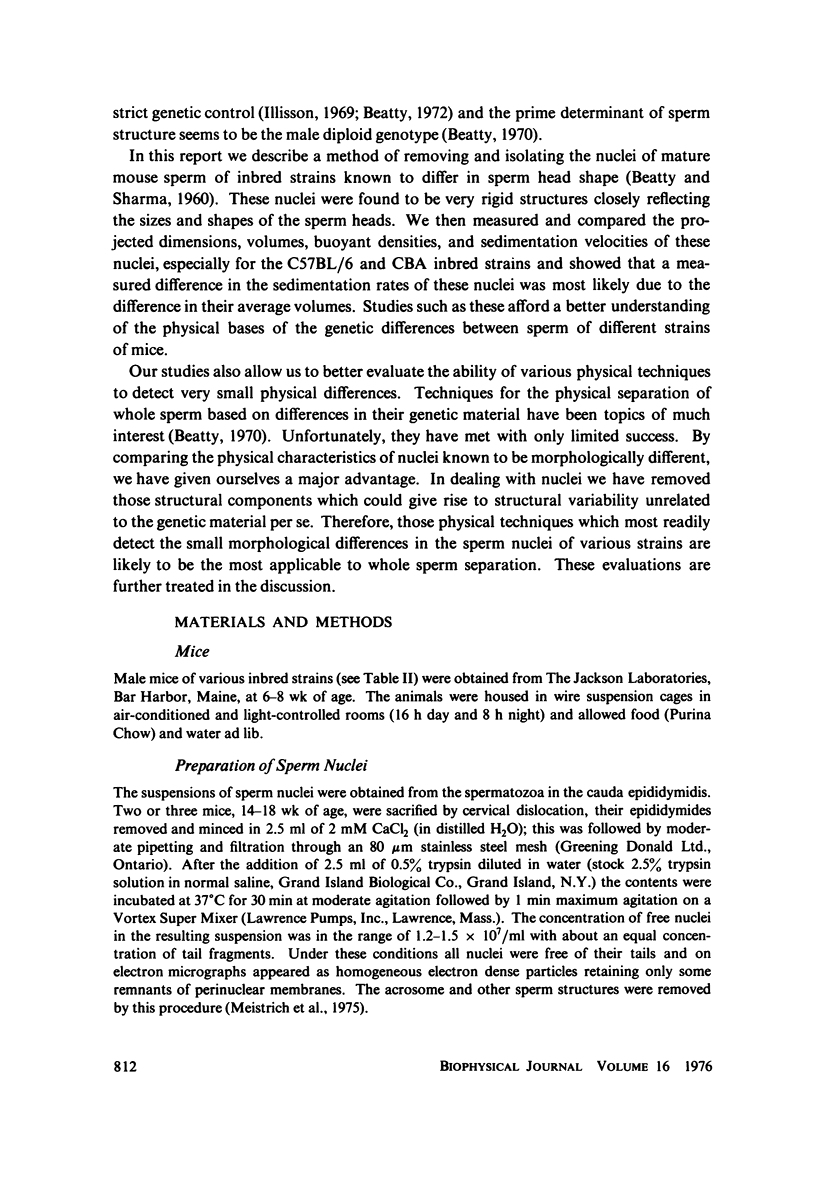
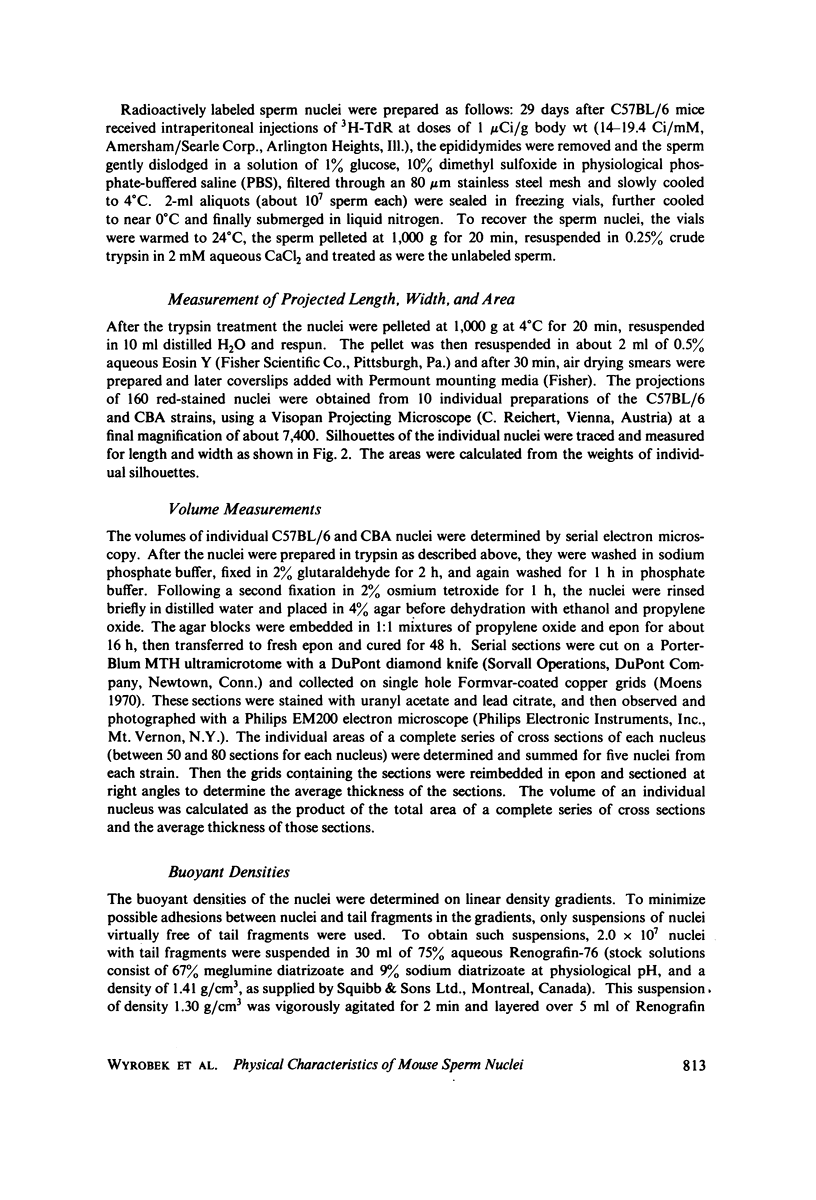
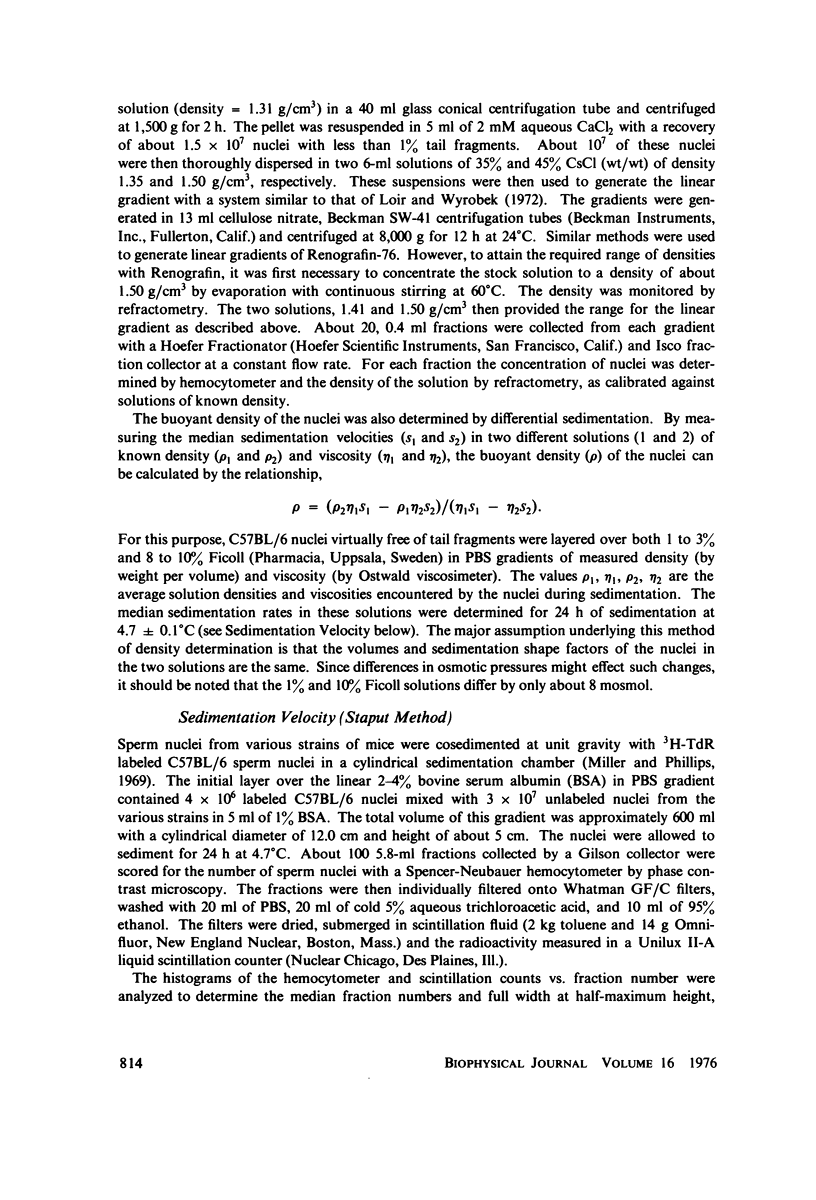

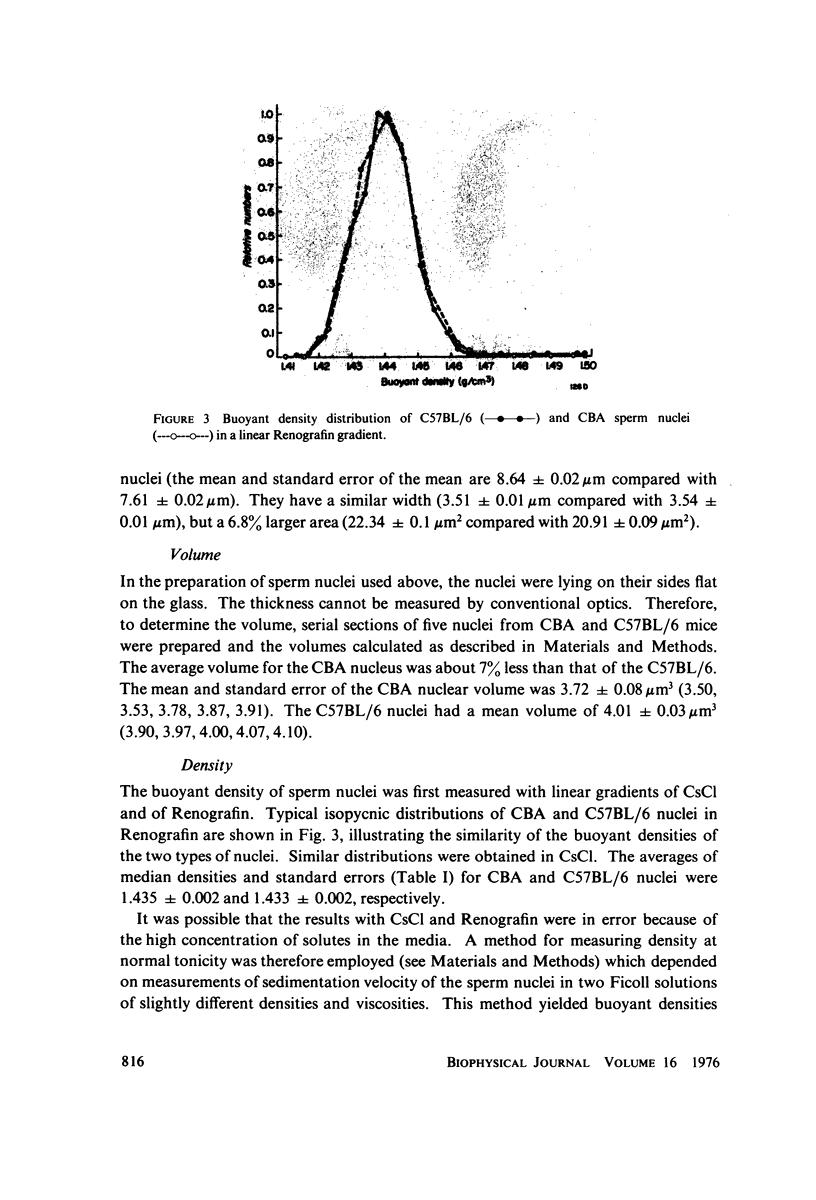
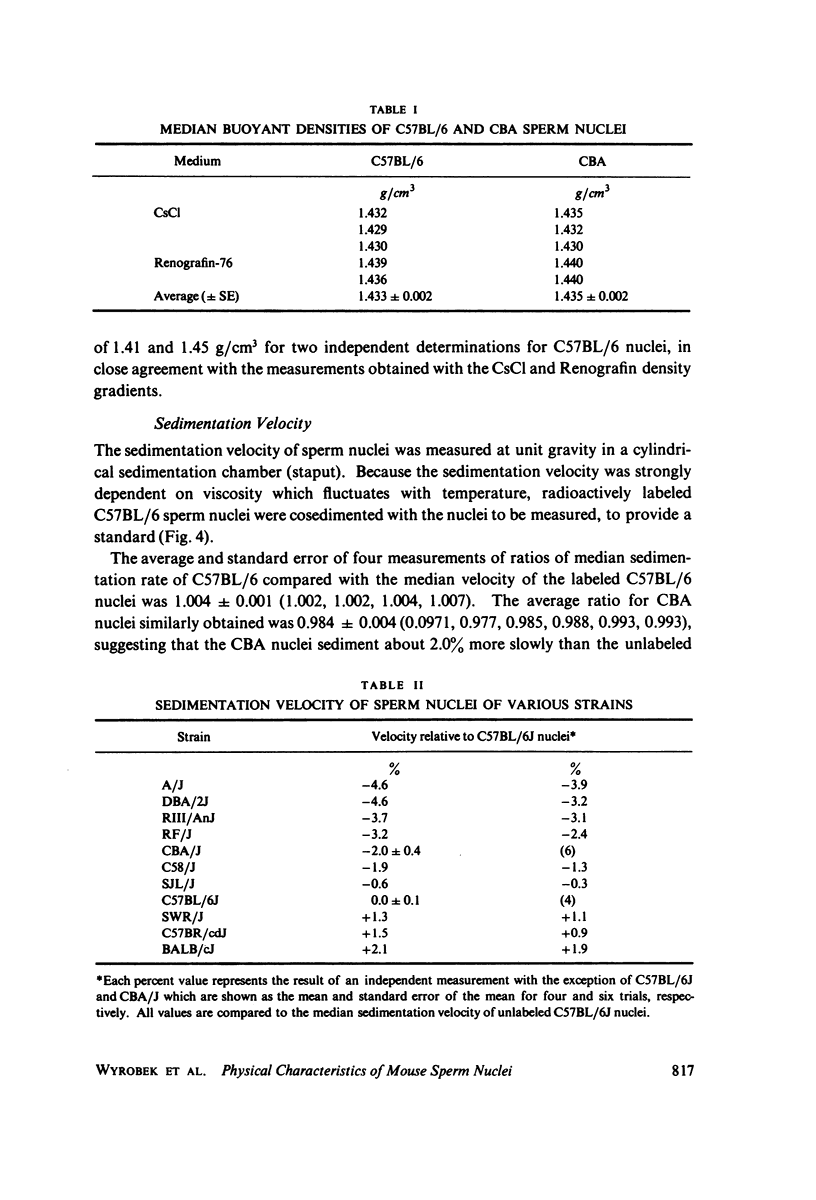
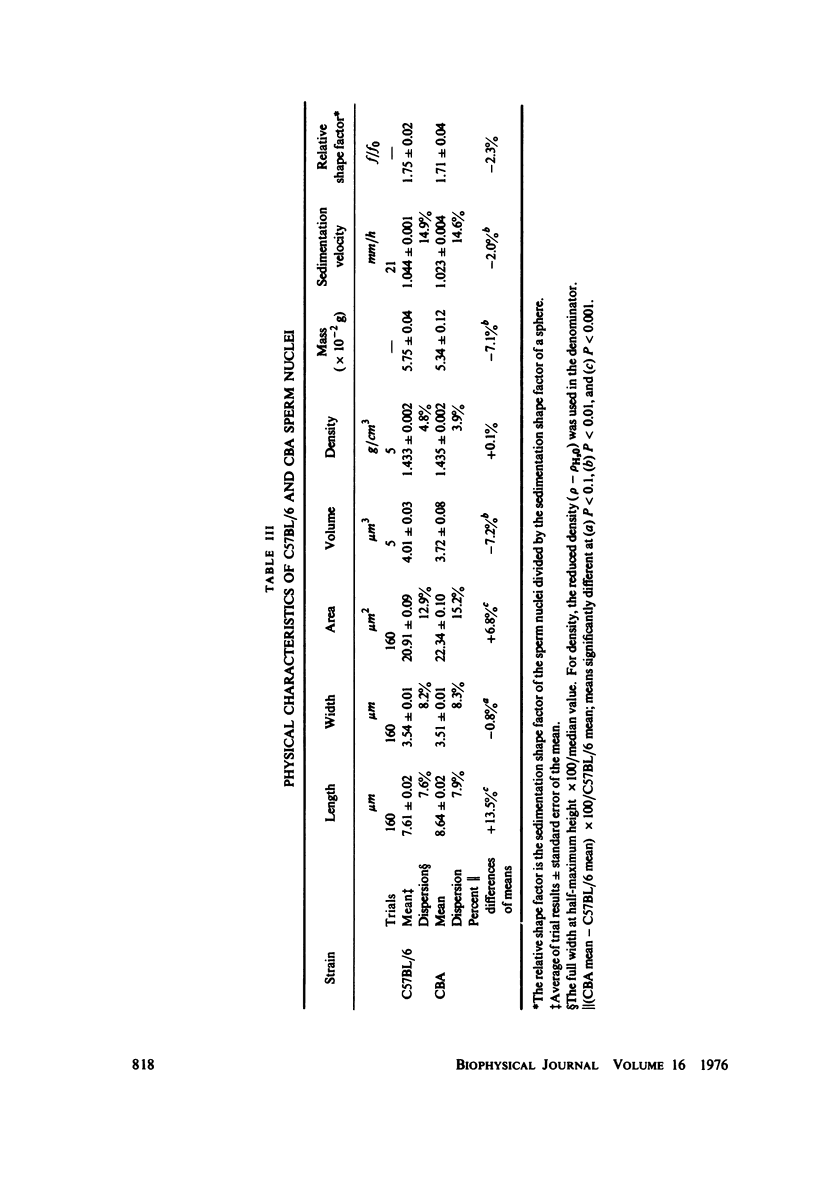
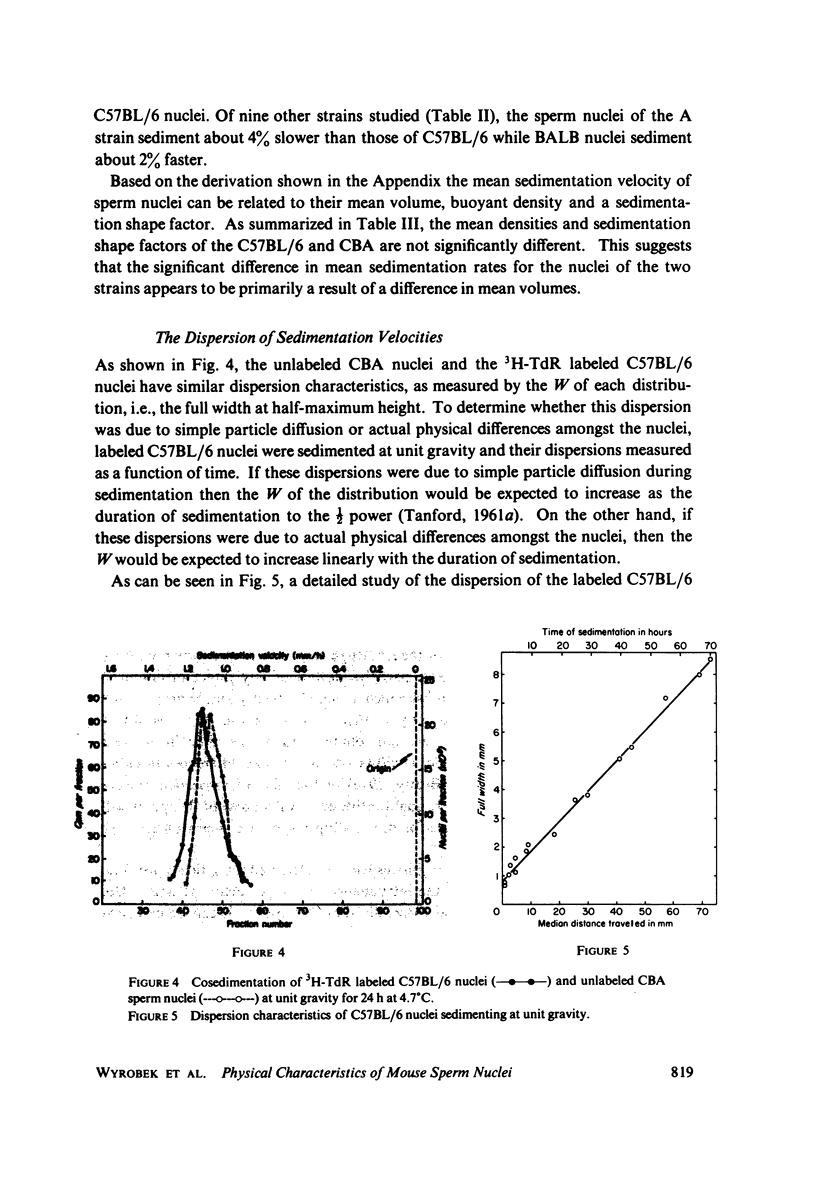
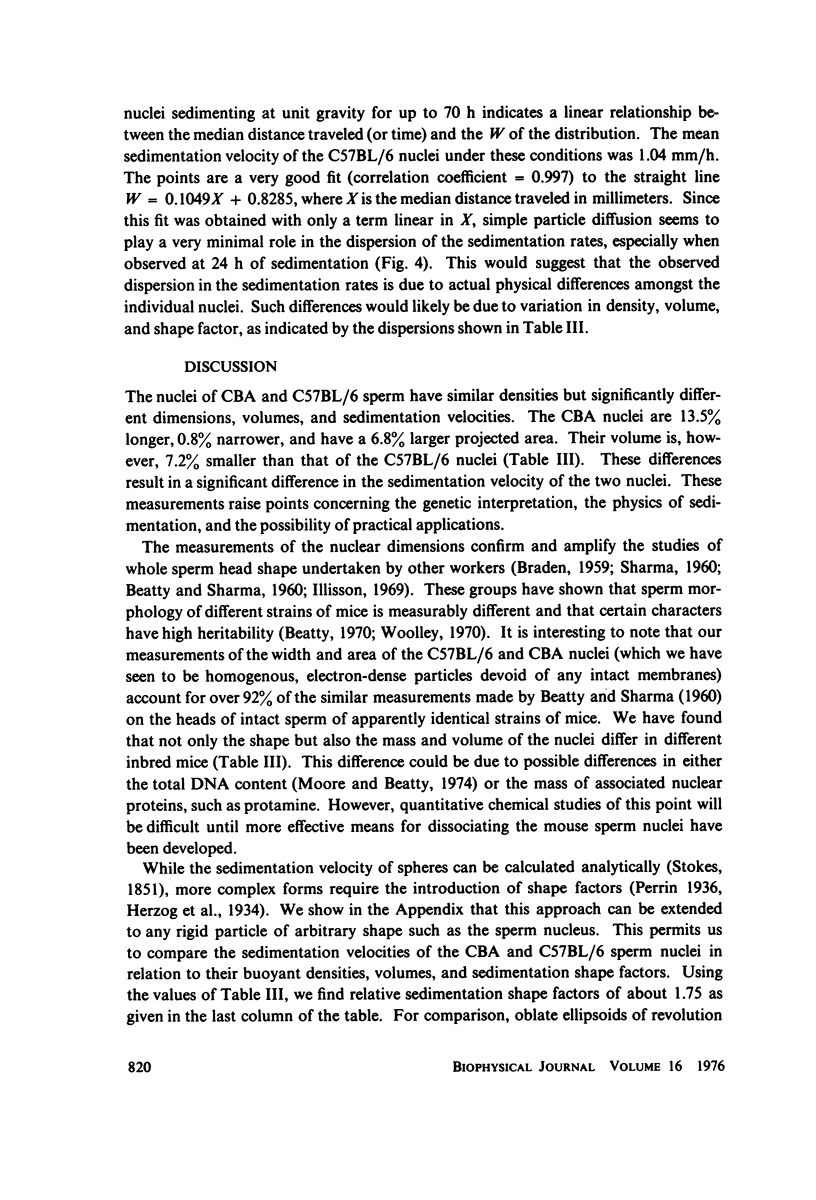
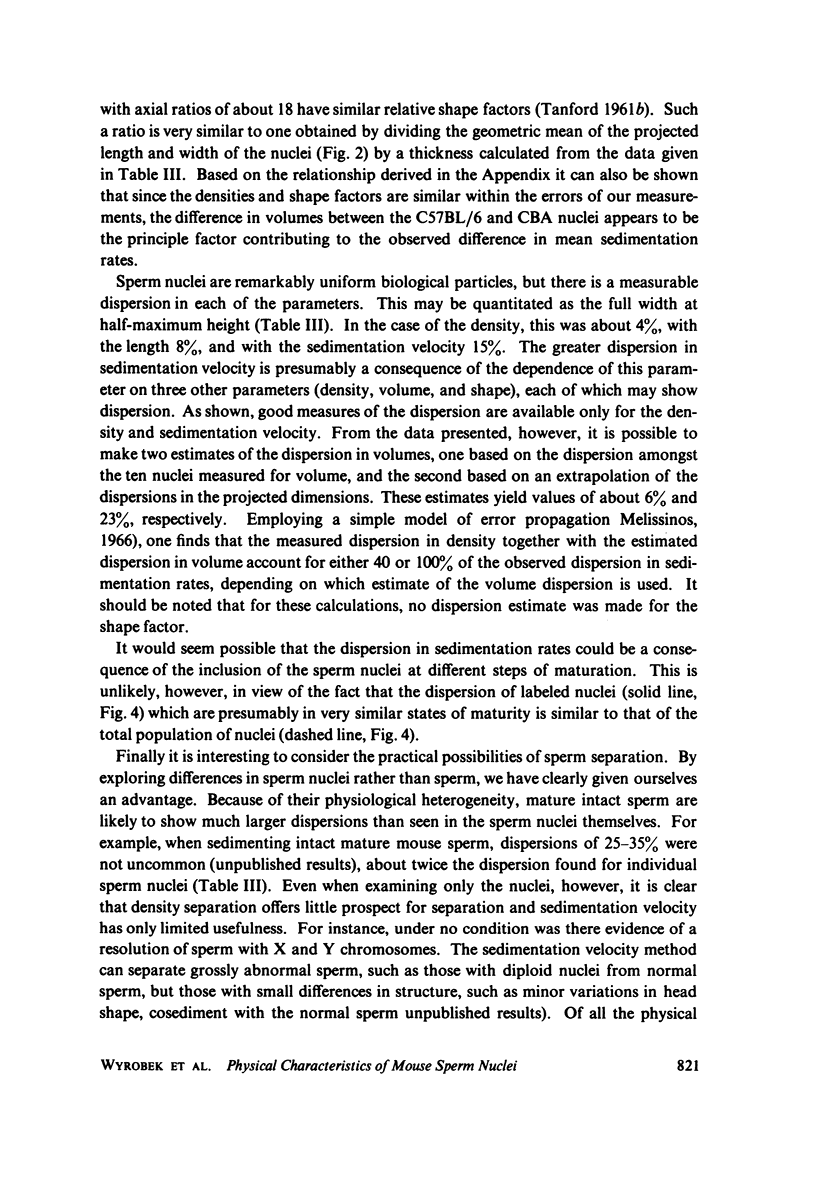
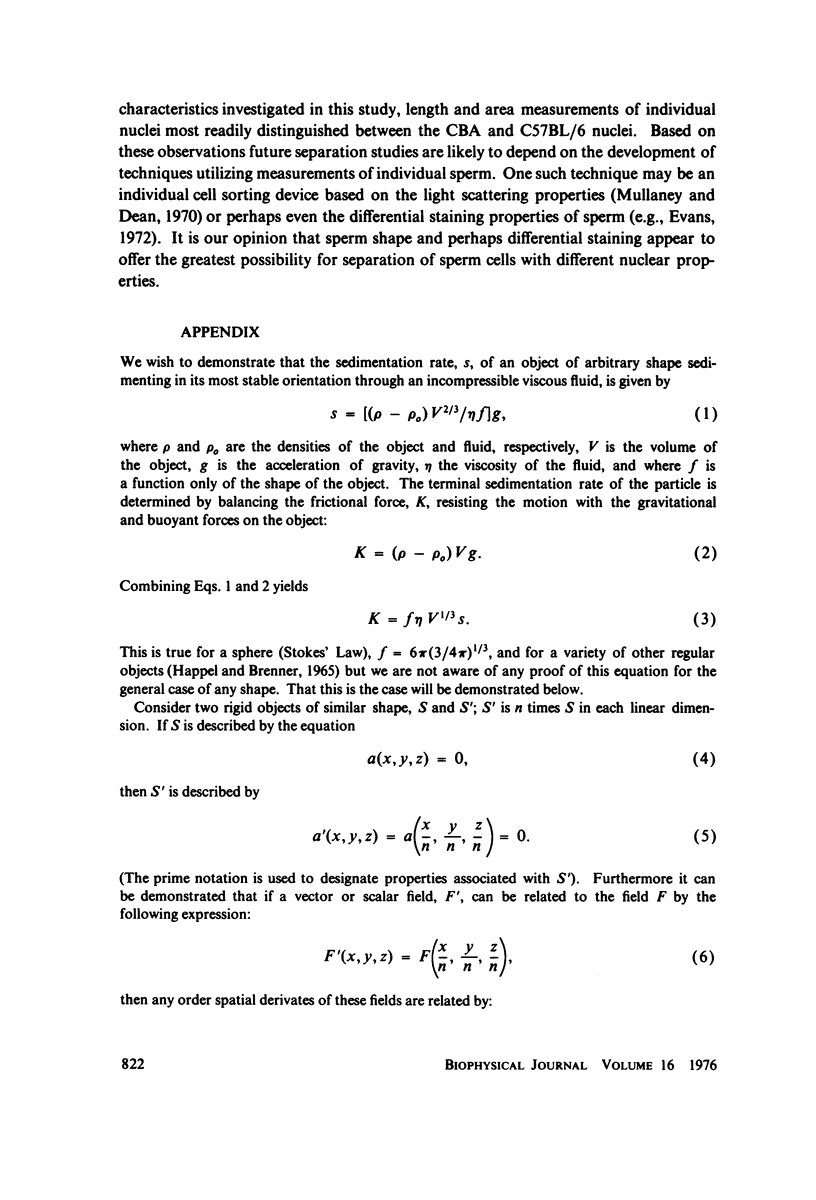

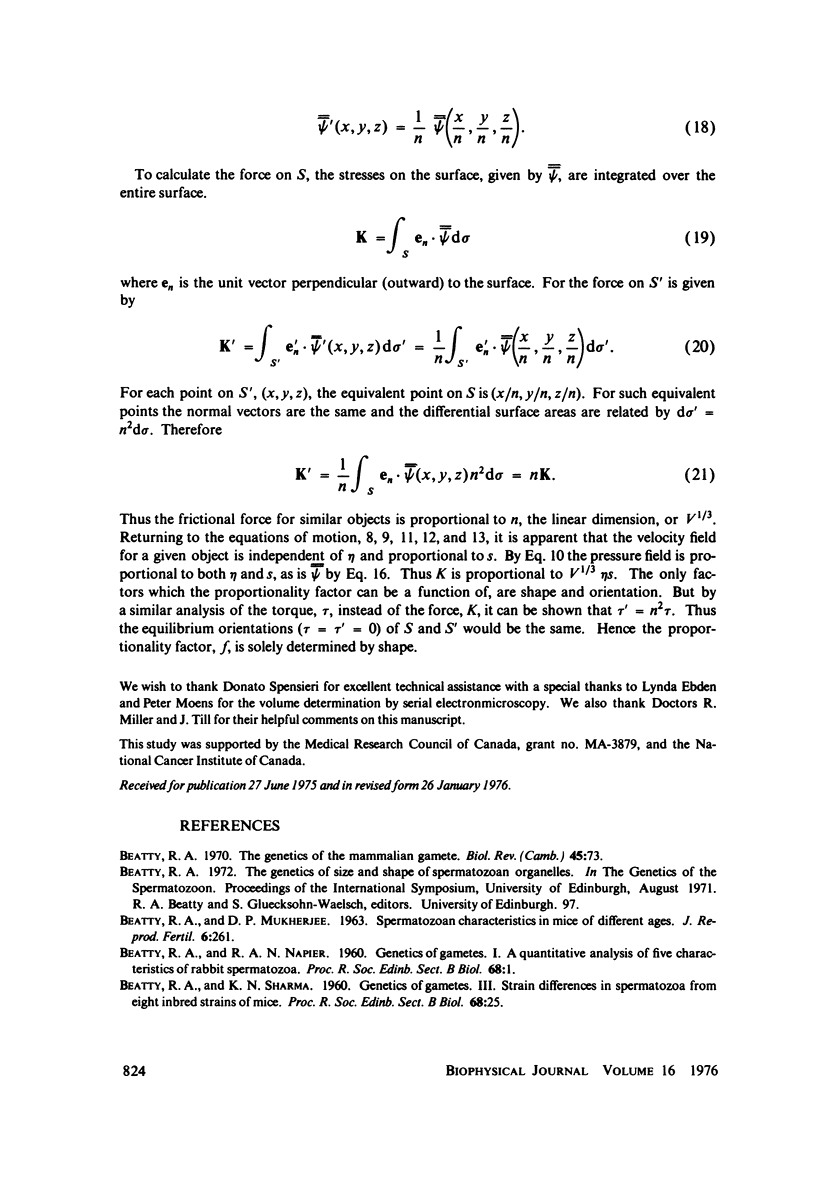
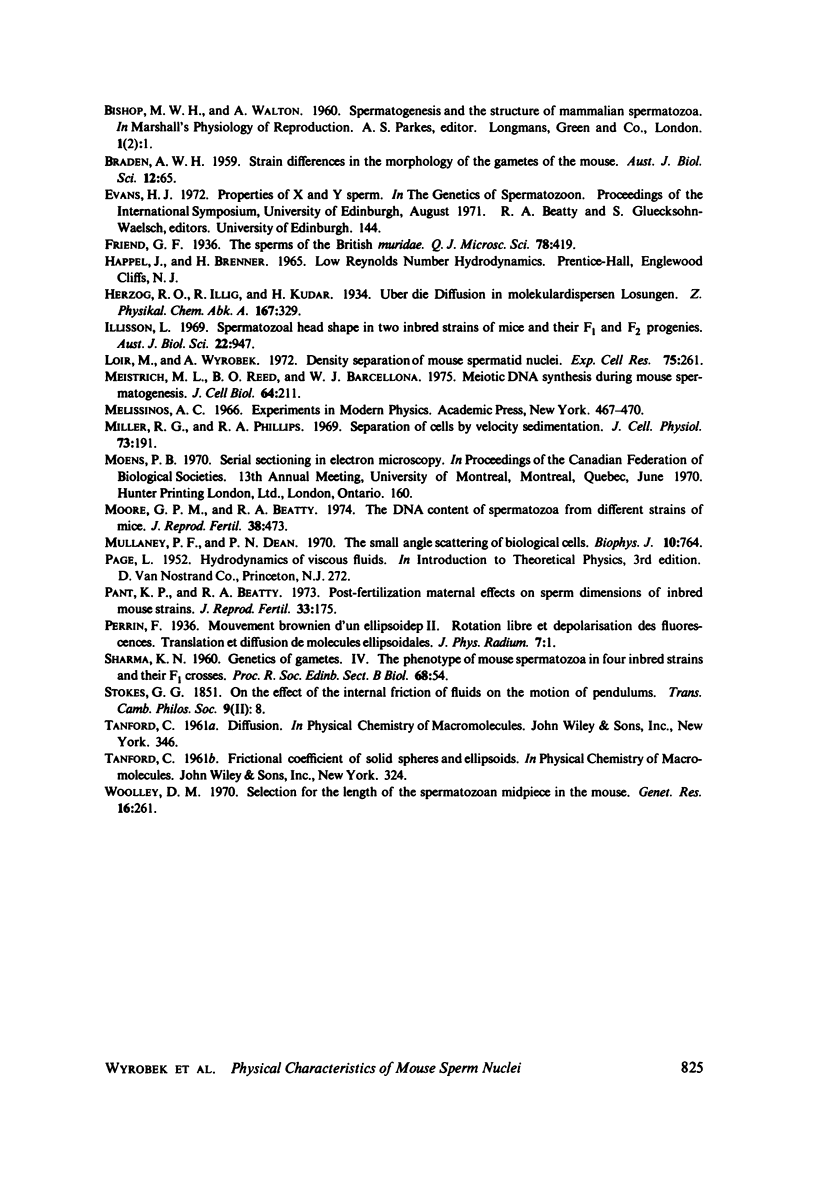
Images in this article
Selected References
These references are in PubMed. This may not be the complete list of references from this article.
- BEATTY R. A., MUKHERJEE D. P. SPERMATOZOAN CHARACTERISTICS IN MICE OF DIFFERENT AGES. J Reprod Fertil. 1963 Oct;6:261–268. doi: 10.1530/jrf.0.0060261. [DOI] [PubMed] [Google Scholar]
- Beatty R. A. The genetics of the mammalian gamete. Biol Rev Camb Philos Soc. 1970 Feb;45(1):73–119. doi: 10.1111/j.1469-185x.1970.tb01076.x. [DOI] [PubMed] [Google Scholar]
- Illisson L. Spermatozoal head shape in two inbred strains of mice and their F1 and F2 progenies. Aust J Biol Sci. 1969 Aug;22(4):947–963. doi: 10.1071/bi9690947. [DOI] [PubMed] [Google Scholar]
- Loir M., Wyrobek A. Density separation of mouse spermatid nuclei. Exp Cell Res. 1972 Nov;75(1):261–265. doi: 10.1016/0014-4827(72)90544-7. [DOI] [PubMed] [Google Scholar]
- Meistrich M. L., Reid B. O., Barcellona W. J. Meiotic DNA synthesis during mouse spermatogenesis. J Cell Biol. 1975 Jan;64(1):211–222. doi: 10.1083/jcb.64.1.211. [DOI] [PMC free article] [PubMed] [Google Scholar]
- Miller R. G., Phillips R. A. Separation of cells by velocity sedimentation. J Cell Physiol. 1969 Jun;73(3):191–201. doi: 10.1002/jcp.1040730305. [DOI] [PubMed] [Google Scholar]
- Moore G. P., Beatty R. A. The DNA content of spermatozoa from different strains of mice. J Reprod Fertil. 1974 Jun;38(2):473–476. doi: 10.1530/jrf.0.0380473. [DOI] [PubMed] [Google Scholar]
- Mullaney P. F., Dean P. N. The small angle light scattering of biological cells. Theoretical considerations. Biophys J. 1970 Aug;10(8):764–772. doi: 10.1016/S0006-3495(70)86334-2. [DOI] [PMC free article] [PubMed] [Google Scholar]
- Pant K. P., Beatty R. A. Post-fertilization maternal effects on sperm dimensions of inbred mouse strains. J Reprod Fertil. 1973 Apr;33(1):175–177. doi: 10.1530/jrf.0.0330175. [DOI] [PubMed] [Google Scholar]
- Woolley D. M. Selection for the length of the spermatozoan midpiece in the mouse. Genet Res. 1970 Dec;16(3):261–275. doi: 10.1017/s0016672300002524. [DOI] [PubMed] [Google Scholar]



